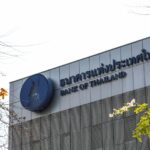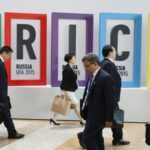A new chapter in Malaysia US trade: what the ART changes
Malaysia and the United States have signed the Agreement on Reciprocal Trade, a sweeping pact that reorders tariff schedules and rewrites many non tariff rules between the two countries. The deal, announced in late October 2025, sets a new baseline for how goods, services and data flow across the Pacific while adding chapters on national security, state owned enterprises and intellectual property. Supporters see a chance to secure tariff certainty, bring in new investment and speed up access to advanced medicines and equipment. Critics warn of policy constraints, pressure on local industries, and sensitive questions around halal rules, sanctions and Bumiputera preferences.
- A new chapter in Malaysia US trade: what the ART changes
- Tariffs and market access, who pays what
- What changes on non tariff barriers
- Healthcare gains and pressure on local manufacturers
- Halal rules, consumer choice and branding
- Digital trade, data flows and media rules
- Semiconductors, rare earths and strategic supply chains
- State owned enterprises, competition and Bumiputera concerns
- Sabah and Sarawak, who benefits beyond the peninsula
- Politics, sovereignty and how disputes will be handled
- What to Know
The agreement’s core bargain is clear. Malaysia lowers or eliminates many tariffs on United States goods and removes layers of non tariff barriers. The United States applies a reciprocal tariff regime anchored at a baseline rate of 19 percent on most Malaysian imports, with zero tariffs only for a defined list of products. Surrounding that trade swap are provisions on digital trade, customs facilitation, rules of origin, standards and conformity assessment, along with cooperation on export controls and investment security. The text recognizes each country’s rights under World Trade Organization rules and sets out how to implement, enforce, modify and, if required, terminate the accord.
Tariffs and market access, who pays what
Tariffs sit at the center of the debate. Under the new regime, the United States sets a 19 percent tariff as a default for most goods imported from Malaysia. A subset of Malaysian products receives zero tariff treatment, reportedly 1,711 items that include electronics and some resource based exports. Those items are detailed in a United States annex and can be adjusted by Washington, which is why several economists describe the pact as a calculated trade off. Malaysia’s side of the ledger is broader. Kuala Lumpur removes or cuts tariffs at scale, with officials and analysts citing more than 11,000 United States made products that see border duties reduced or eliminated.
Rules of origin are crucial. Only goods that qualify as made in the United States or in Malaysia under agreed criteria get the full benefits. That is designed to prevent third country products from entering through the back door and to focus gains on real bilateral trade. The agreement also commits both sides to avoid using quantitative restrictions outside of what WTO rules allow, to reduce red tape at the border, and to streamline customs procedures for quicker clearance.
What changes on non tariff barriers
The text takes aim at the less visible walls that slow trade. It calls for the elimination of restrictive import licensing systems that do not serve a clear purpose, and for the avoidance of duplicative conformity assessments that force firms to pass the same test twice. It leans toward mutual reliance on credible regulators and standards, especially where safety and quality can be shown through existing international programs. That shift is meant to cut delays and compliance costs for businesses while maintaining protections for health and consumer safety.
The agreement also signals an opening for remanufactured and refurbished goods, a sensitive area for many developing countries. Malaysia commits to treat such products in a manner that reflects commercial realities, while preserving the right to enforce safety and consumer rules. Labor and environmental standards are flagged in the text, as are commitments to crack down on unfair trade practices.
Healthcare gains and pressure on local manufacturers
Healthcare may see the most immediate changes felt by consumers and hospitals. Under the deal, Malaysia must accept a prior marketing authorization from the United States Food and Drug Administration as sufficient evidence that a pharmaceutical made in the United States meets Malaysia’s requirements for a marketing authorization. For medical devices, prior FDA approval or clearance must also be accepted as sufficient. Low risk devices that do not require authorization by the FDA cannot be made to obtain a separate authorization in Malaysia. The agreement requires recognition of audits and certificates under the Medical Device Single Audit Program and adoption of relevant guidance from the International Medical Device Regulators Forum. Malaysia must also accept FDA electronic certificates for drugs and devices without demanding paper copies, and it should not require periodic re authorization unless there is a serious safety, effectiveness or quality concern.
These changes are designed to shorten the wait for new therapies and equipment. Malaysia’s regulators, the National Pharmaceutical Regulatory Agency and the Medical Device Authority, still oversee registration and surveillance, but United States made products effectively gain an express lane. That could expand the variety of medicines and devices on the Malaysian market, especially in private hospitals. It does not guarantee lower prices, particularly for treatments for rare diseases, although more competition can improve the bargaining position of payers. The benefits also depend on where a product is manufactured. A vaccine made in Europe by a United States company would not qualify for the fast track unless it is produced in the United States, a detail that is already reshaping global manufacturing strategies.
Halal rules, consumer choice and branding
The pact touches a delicate area for Malaysia’s Muslim consumers. Industrial goods such as cosmetics, pharmaceuticals and medical devices do not require halal certification to enter at the border under the deal. For goods that seek to be sold as halal in Malaysia, the government maintains its existing framework. Imports must comply with Malaysia’s halal standards and the Trade Descriptions Act. Only halal products certified by United States halal certification bodies recognized by the Department of Islamic Development Malaysia will be approved and permitted for trade as halal.
Brands will likely adjust. Some may maintain distinct halal lines for Muslim consumers, while others may compete on quality and price without a halal label. Economists caution that a portion of consumers may feel uneasy if packaging or marketing changes. Clear labeling and continued recognition of trusted certifiers can help preserve confidence while allowing quicker access to vital products such as insulin pumps, imaging equipment and sterile supplies.
Digital trade, data flows and media rules
The agreement commits Malaysia to a more open digital economy. It includes a pledge not to impose a discriminatory digital services tax and to keep the long standing moratorium on customs duties on electronic transmissions. It also supports cross border data flows, which helps cloud services, finance, logistics and software firms operate across borders without setting up redundant data centers for every market. These steps can draw in new investment and jobs in information technology and shared services, and they align with Malaysia’s drive to be a regional hub for digital trade.
Concerns center on policy space. Accepting these rules limits the government’s options to tax digital platforms or require strict data localization in the future. Regulators can still enforce privacy, cybersecurity and consumer protection, but measures must be applied in a non discriminatory way and should not be disguised restrictions on trade. Broadcasting and content related constraints may also be eased for United States providers, a shift that requires careful balancing with cultural policies and local creative industries.
Semiconductors, rare earths and strategic supply chains
Malaysia’s position in global chipmaking gives the semiconductor chapter special weight. The new tariff framework in ART does not set sector specific rates for semiconductors. Those fall under Section 232 of the United States Trade Expansion Act, a law that allows tariffs on national security grounds. Malaysian officials say the United States will give special consideration to Malaysia’s semiconductor sector when it reviews those measures. That process runs in parallel and will be handled by the United States Secretary of Commerce, not within the ART committee structure.
Even so, the zero tariff list for Malaysia includes electronics where the country is strong, and the broader message on resilient supply chains suggests more cooperation in packaging, testing and advanced manufacturing. Rare earths and other critical minerals also feature in conversations with investors. With firm controls on raw exports and incentives to build refining and component production at home, Malaysia could capture more value, attract technology partners and reduce volatility in global shocks.
Rules of origin matter for chips and minerals. Benefits are locked to products that are sufficiently transformed within Malaysia or the United States. That helps avoid simple transshipment through third countries and steers investment into real production.
State owned enterprises, competition and Bumiputera concerns
The agreement requires state owned enterprises to act in line with commercial considerations and to avoid unfair discrimination. It encourages neutral regulation, investment facilitation and stronger intellectual property protection. Some Malaysian groups worry these commitments could collide with pro Bumiputera policies that aim to raise participation and equity for the majority community. Concerns also extend to procurement practices and the role of government linked companies as tools for social policy as well as business.
The government’s position is that the pact is lawful and preserves sovereignty. The Prime Minister has stated that the agreement complies with the Federal Constitution. The Investment, Trade and Industry Minister has argued that the deal safeguards jobs and that several large purchases, such as aircraft and equipment, were already announced before ART. Officials also point to the agreement’s implementation and dispute settlement procedures, which include consultations and the option to terminate if national interests are at risk. Economists who back ART say tariff certainty and the opening for higher value manufacturing can coexist with targeted domestic support if programs are designed in a transparent, competition friendly way.
Sabah and Sarawak, who benefits beyond the peninsula
Regional dynamics matter. The deputy minister for plantations and commodities has said Sabah and Sarawak are not sidelined. The zero tariff list for Malaysian exports includes key commodities where the Borneo states are strong, such as palm oil, rubber, timber and cocoa. Sabah, which leads the nation in crude palm oil output, could benefit from wider access for certified sustainable palm oil and cocoa based products. Many of these sectors depend on smallholders and cooperatives that receive federal and state support for certification and productivity programs.
Energy is part of the conversation. Some local leaders asked whether liquefied natural gas imports from the United States would unsettle operations at Kimanis or Bintulu. Officials responded that national energy strategy already diversifies supply to balance security and price, and that core facilities in Sabah and Sarawak remain central assets that contribute significant revenue to both state and federal coffers.
Politics, sovereignty and how disputes will be handled
Debate over sovereignty surged as the text became public. Opposition figures argue the pact binds Malaysia to United States standards and sanctions, potentially eroding neutrality that investors value. The government and several economists counter that the deal is a strategic hedge in a turbulent trade environment, trading regulatory concessions for tariff certainty and a stronger pull for investment. They add that the agreement’s selectivity on United States tariff relief, concentrated on 1,711 items, is matched by Malaysian concessions that could raise consumer choice and pressure domestic industries to move up the value chain.
On enforcement and risk management, the agreement builds a framework for implementation, monitoring and consultation. It recognizes rights and obligations under WTO agreements, includes procedures for amending lists, and outlines how either party can modify or exit the arrangement. Chapters on economic and national security cooperation cover export controls and investment screening, reflecting supply chain lessons from recent global shocks. The real test will come in how both sides handle disputes over standards, digital measures or state support, and whether Malaysia can use the opening to turn planned reforms into competitive strengths.
What to Know
- United States baseline tariff for most Malaysian imports is 19 percent, with zero tariffs for a defined list of 1,711 items.
- Malaysia removes or reduces tariffs on a wide set of United States goods, reportedly covering more than 11,000 product lines.
- Malaysia must accept FDA approvals and certificates for United States made drugs and devices, cutting duplicate reviews and paperwork.
- Low risk medical devices that do not require FDA authorization cannot be made to obtain a local authorization in Malaysia.
- Digital chapter commits Malaysia to allow cross border data flows, avoid discriminatory digital services taxes and keep duties off electronic transmissions.
- Rules of origin ensure only goods made in the two countries receive benefits, limiting transshipment via third countries.
- State owned enterprises are expected to act on commercial terms, raising questions about alignment with Bumiputera preferences.
- Semiconductor tariffs fall under separate Section 232 talks, where officials say Malaysia will receive special consideration.
- Sabah and Sarawak are set to benefit through palm oil, rubber, timber and cocoa on the zero tariff list for Malaysian exports.
- Government leaders say the pact complies with the Constitution and preserves sovereignty, with options to consult, modify or terminate if needed.




